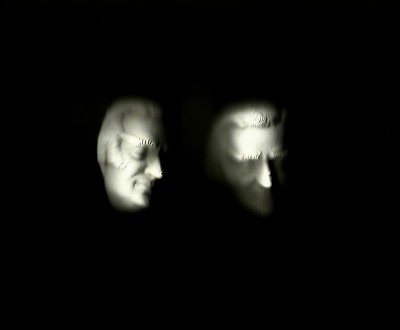No edit summary |
No edit summary |
||
| (2 intermediate revisions by the same user not shown) | |||
| Line 1: | Line 1: | ||
[[File: | [[File:Masks2.jpg]] | ||
untitled, (a collection of objects), (working title) | |||
My art practice looks to explore ideas of representation using strategies of re-examining and appropriation. To this end I make use of a variety of different media including sculpture, photography, and publishing, often working towards an analogue feel and incorporating subtle aesthetics. | |||
With this particular project I'm interested in exploring ideas surrounding the representation of cultural and historic value; including the nature of this 'value' and the dynamics of borrowing and appropriation that surround it. | |||
My project takes the faces and names of canonical German cultural figures and looks to use not only their forms, but also their legacies and associations as my working materials. | |||
Together, this 'collection' takes form as a series of objects made from plaster, clay and paper; including miniature masks taken from statuettes of German cultural figures, as well as traces of other common items and imagery. With figures such as Goethe and Liszt, the collection invokes a significance particular to the locality of Weimar or Germany more widely, and yet it could be taken anywhere and displayed as the spoils or curiosities of another place. | |||
The construction of identity, place, politics and economy are implicated, as are references to museology, the Romantic and Classical periods, and contemporary art practice. With no interest in fabricating or fostering a narrative, the objects remain honest to an abject sense of irony that also seeks to remain earnest. | |||
Latest revision as of 14:43, 21 February 2013
untitled, (a collection of objects), (working title)
My art practice looks to explore ideas of representation using strategies of re-examining and appropriation. To this end I make use of a variety of different media including sculpture, photography, and publishing, often working towards an analogue feel and incorporating subtle aesthetics.
With this particular project I'm interested in exploring ideas surrounding the representation of cultural and historic value; including the nature of this 'value' and the dynamics of borrowing and appropriation that surround it.
My project takes the faces and names of canonical German cultural figures and looks to use not only their forms, but also their legacies and associations as my working materials.
Together, this 'collection' takes form as a series of objects made from plaster, clay and paper; including miniature masks taken from statuettes of German cultural figures, as well as traces of other common items and imagery. With figures such as Goethe and Liszt, the collection invokes a significance particular to the locality of Weimar or Germany more widely, and yet it could be taken anywhere and displayed as the spoils or curiosities of another place.
The construction of identity, place, politics and economy are implicated, as are references to museology, the Romantic and Classical periods, and contemporary art practice. With no interest in fabricating or fostering a narrative, the objects remain honest to an abject sense of irony that also seeks to remain earnest.
